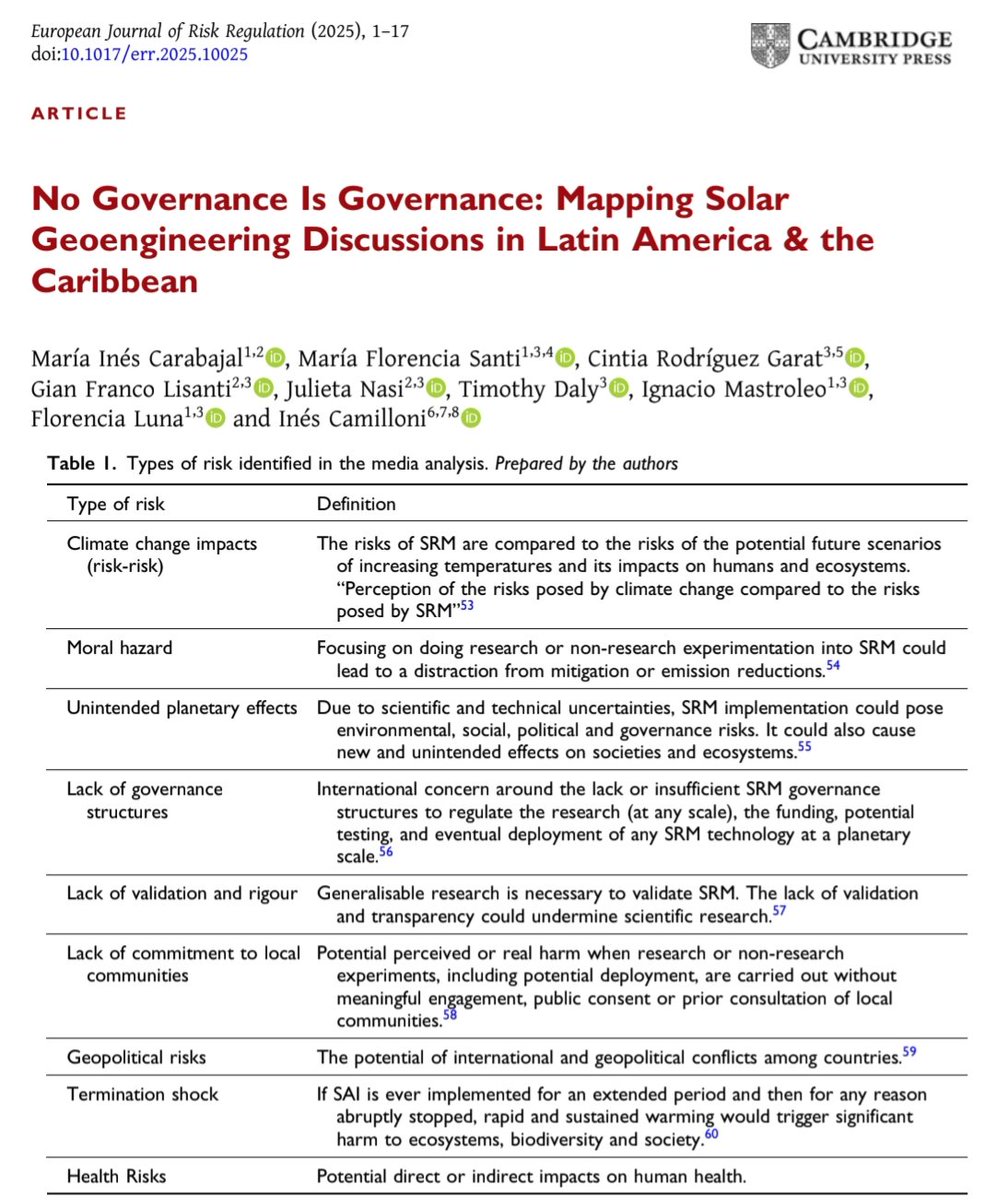🚨Global talk on #SolarGeoengineering is heating up but Latin America’s barely in the room.
A new study analyzes the #MakeSunsets case in Mexico & shows why Latin America & the Caribbean need urgent, inclusive SRM governance to prevent risks & protect real research.🧵1/8
A new study analyzes the #MakeSunsets case in Mexico & shows why Latin America & the Caribbean need urgent, inclusive SRM governance to prevent risks & protect real research.🧵1/8

2/ With climate risks growing, solar radiation modification is gaining attention globally.
Yet in the Latin America & the Carribean (LAC) region, it's still a marginal topic, largely absent from political agendas, public debate, and regulatory systems.
Yet in the Latin America & the Carribean (LAC) region, it's still a marginal topic, largely absent from political agendas, public debate, and regulatory systems.
3/ In 2023, a US-based startup called Make Sunsets released SO2 over Baja California without local approval, triggering outrage & prompting Mexico to ban SRM experiments.
The incident highlighted gaps in governance and ethical oversight.
The incident highlighted gaps in governance and ethical oversight.
4/ The authors describe Make Sunsets as a “theatrical,” non-research actor issuing "cooling credits" with no scientific verification.
Its actions were ethically unjustified and lacked transparency, community consent, and accountability.
Its actions were ethically unjustified and lacked transparency, community consent, and accountability.
5/ The study analyzed 89 media articles on SRM in LAC region, focusing on Make Sunset case.
Top public concerns included:
– unintended planetary effects (28.9%)
– lack of governance (15.6%)
– weak scientific basis (13.9%)
– climate risk tradeoffs & geopolitical tensions
Top public concerns included:
– unintended planetary effects (28.9%)
– lack of governance (15.6%)
– weak scientific basis (13.9%)
– climate risk tradeoffs & geopolitical tensions

6/ The authors argue that inaction (i.e. not developing policy) lets irresponsible actors set the agenda, fueling mistrust, perceived neo-colonialism, and undermining legitimate research.
Hence, "no governance" shapes outcomes too.
Hence, "no governance" shapes outcomes too.
7/ The paper calls for anticipatory, participatory governance structures that involve LAC actors in shaping global SRM policy rooted in ethics, transparency, and inclusion.
Ignoring these voices risks deepening inequality and conflict.
Ignoring these voices risks deepening inequality and conflict.
📝Read the full open-access paper:
"No Governance Is Governance: Mapping Solar Geoengineering Discussions in Latin America & the Caribbean" here:
#SRM #Geoengineering #ClimateJustice #LAC #Governance #ClimateIntervention 🧵8/8researchgate.net/publication/39…
"No Governance Is Governance: Mapping Solar Geoengineering Discussions in Latin America & the Caribbean" here:
#SRM #Geoengineering #ClimateJustice #LAC #Governance #ClimateIntervention 🧵8/8researchgate.net/publication/39…
"Unroll" @threadreaderapp
• • •
Missing some Tweet in this thread? You can try to
force a refresh









